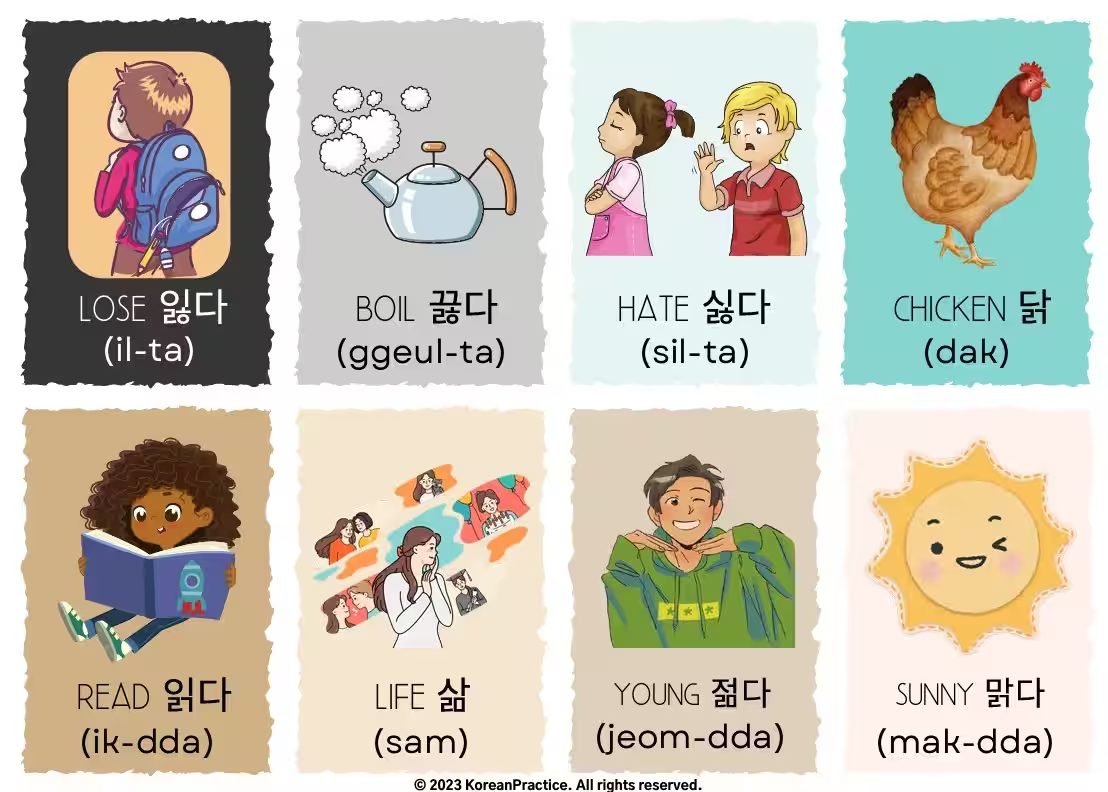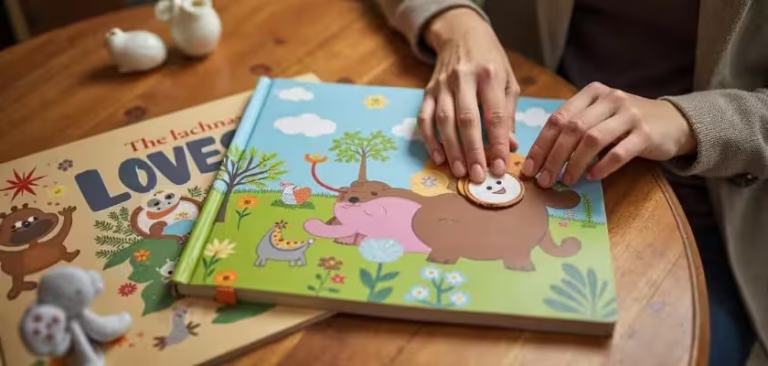Suh ChangWhoon
Written by 서 창훈, a certified Korean teacher with 14+ years of experience in Japan. He previously worked as a government officer, cybersecurity consultant, and English interpreter. Today, he teaches Korean in real classrooms without complex grammar explanations — instead, he trains students’ brains to speak naturally. His unique method is now the foundation of all his Korean courses.
Table of Contents
Why You Should Learn Korean Through Stories
Tired of memorizing grammar rules without understanding how real Korean works? If you want a more natural, engaging way to study, it’s time to learn Korean through stories. Stories give you real context, help you remember words faster, and make learning fun — especially if you’re just starting out.
Whether you’re looking for Korean short stories for beginners or practical reading Korean for beginners materials, this post will help you take the first step.
Watch: Korean Story Reading Practice for Beginners
This short video was created for beginner learners like you.
It includes:
A simple Korean story to read
Clear pronunciation Sentence breakdowns
Shadowing practice for speaking
Watch the video below, then scroll down for the full text and explanations:
Full Korean Story with Sentence Breakdown
Let’s go deeper into the story from the video. If you want Korean reading practice stories that are simple but effective, this is for you.
Line 1
Original Korean Sentence
일요일 아침에 나는 책을 읽었어요.
Pronunciation Guide
일요일 (i-ryo-il) 아침에 (a-chi-me) 나는 (na-neun) 책을 (chae-geul) 읽었어요 (il-geo-sseo-yo).
Meaning and Context
일요일 (Sunday) 아침 (morning) 에 (in, on) 나 (I) 는 (topic marker; I’m going to talk about me) 책 (book) 을 (object marker; my object is book) 읽 (to read) 었 (past tense) 어요 (polite ending; I’m telling you polite and friendly).
English Translation
I read a book on Sunday morning.
Literal Translation
On Sunday morning I read book.
Line 2
Original Korean Sentence
오후에는 공원에서 친구를 만났어요.
Pronunciation Guide
오후에는 (o-hu-e-neun) 공원에서 (gong-wo-ne-seo) 친구를 (chin-gu-reul) 만났어요 (man-na-sseo-yo).
Meaning and Context
오후 (afternoon) 에 (in) 는 (topic marker; my topic is in the afternoon) 공원 (park) 에서 (at) 친구 (friend) 를 (object marker; my object is friend) 만나 (to meet) 았 (past tense) 어요 (polite form; I’m telling you polite and friendly).
Pronunciation Flow Tip
⊳ 나 + 았 = 났.
Rapidly pronouncing ‘나’ and ‘았’ results in ‘났’.
English Translation
I met a friend at the park in the afternoon.
Literal Translation
In afternoon at park (I) met friend.

Start the Free Course
Still wondering how to read Korean?

This isn’t just another beginner lesson. It’s a complete system designed to change the way you think about Korean — from struggling with letters to reading real sentences, understanding the language, and speaking out loud with confidence.
Line 3
Original Korean Sentence
잔디밭에 앉아서 친구와 얘기를 했어요.
Pronunciation Guide
잔디밭에 (jan-di-ba-te) 앉아서 (an-ja-seo) 친구와 (chin-gu-wa) 얘기를 (yae-gi-reul) 했어요 (hae-sseo-yo).
Meaning and Context
잔디밭 (lawn) 에 (at, on, in) 앉 (to sit) 아서 (and) 친구 (friend) 와 (with) 얘기 (talk) 를 (object marker; my object is talk) 했 (did) 어요 (polite form; I’m telling you polite and friendly).
English Translation
I sat on the lawn and talked with my friend.
Literal Translation
(I) sit on lawn and did talk with friend.
Line 4
Original Korean Sentence
우리는 샌드위치와 과일을 먹었어요.
Pronunciation Guide
우리는 (u-ri-neun) 샌드위치와 (saen-deu-wi-chi-wa) 과일을 (gwa-i-reul) 먹었어요 (meo-geo-sseo-yo).
Meaning and Context
우리 (we) 는 (topic marker; my topic is we) 샌드위치 (sandwich) 와 (and) 과일 (fruit) 을 (object marker; my object is sandwich and fruit) 먹 (to eat) 었(past tense) 어요 (polite form; I’m telling you polite and friendly).
English Translation
We ate sandwiches and fruit.
Literal Translation
We ate sandwich and fruit.
Master Korean present tense with this fun read: Korean Short Story for Beginners – Jungle Wildlife.
Line 5
Original Korean Sentence
한 여자가 벤치에 앉아서 음악을 듣고 있었어요.
Pronunciation Guide
한 (han) 여자가 (yeo-ja-ga) 벤치에 (ben-chi-e) 앉아서 (an-ja-seo) 음악을 (eum-a-geul) 듣고 (deut-go) 있었어요 (i-sseo-sseo-yo).
Meaning and Context
한 (one) 여자 (woman) 가 (subject marker; I’m going to talk about a woman) 벤치 (bench) 에 (at, on, in) 앉 (to sit) 아서 (and) 음악 (music) 을 (object marker; my object is music) 듣 (to listen) 고 있 (~ing) 었 (past tense) 어요 (polite form; I’m telling you polite and friendly).
English Translation
A woman was sitting on the bench listening to music.
Literal Translation
One woman sit on bench and was listening music.
Still confused by Korean grammar? Here’s why you’re struggling—and what to do instead.
Line 6
Original Korean Sentence
우리도 벤치에 앉아서 여러가지 색의 쥬스를 마셨어요.
Pronunciation Guide
우리도 (u-ri-do) 벤치에 (ben-chi-e) 앉아서 (an-ja-seo) 여러가지 (yeo-reo-ga-ji) 색의 (sae-geui) 쥬스를 (jyu-seu-reul) 마셨어요 (ma-syeo-sseo-yo).
Meaning and Context
우리 (we) 도 (also) 벤치 (bench) 에 (at, on, it) 앉 (to sit) 아서 (and) 여러가지 (various) 색 (color) 의 (‘s) 쥬스 (juice) 를 (object marker; my object is juice) 마시 (to drink) 었 (past tense) 어요 (polite form; I’m telling you polite and friendly).
Pronunciation Flow Tip
⊳ 마시 + 었 = 마셨.
Rapidly pronouncing ‘시’ and ‘었’ results in ‘셨’.
English Translation
We also sat on the bench and drank various colored juices.
Literal Translation
We also sit on bench and drank various color’s juice.
Line 7
Original Korean Sentence
언덕에 누워서 구름을 봤어요.
Pronunciation Guide
언덕에 (eon-deo-ge) 누워서 (nu-wo-seo) 구름을 (gu-reu-meul) 봤어요 (bwa-sseo-yo).
Meaning and Context
언덕 (hill) 에 (on) 눕 (to lie down) 어서 (and) 구름 (cloud) 을 (object marker; my object is cloud) 보 (to see) 았 (past tense) 어요 (polite form; I’m telling you polite and friendly).
Pronunciation Flow Tip
⊳ 눕 + 어서 = 누워서.
Rapidly pronouncing ‘눕’ and ‘어’ results in ‘누워’ irregularly.
⊳ 보 + 았 = 봤.
Rapidly pronouncing ‘보’ and ‘았’ results in ‘봤’.
English Translation
I lay down on the hill and watched the clouds.
Literal Translation
(I) lie down on hill and saw cloud.
- Most learners get confused by translations like that at first.
My course explains them with full, story-style breakdowns that finally make sense.
Line 8
Original Korean Sentence
언덕에 앉아서 새를 봤어요.
Pronunciation Guide
언덕에 (eon-deo-ge) 앉아서 (an-ja-seo) 새를 (sae-reul) 봤어요 (bwa-sseo-yo).
Meaning and Context
언덕 (hill) 에 (on) 앉 (to sit) 아서 (and) 새 (bird) 를 (object marker; my object is bird) 보 (to see) 았 (past tense) 어요 (polite form; I’m telling you polite and friendly).
Pronunciation Flow Tip
⊳ 보 + 았 = 봤.
Rapidly pronouncing ‘보’ and ‘았’ results in ‘봤’.
English Translation
I sat on the hill and watched the birds.
Literal Translation
(I) sit on hill and saw bird.
Line 9
Original Korean Sentence
갑자기 강아지 한 마리가 우리에게 왔어요.
Pronunciation Guide
갑자기 (gap-ja-gi) 강아지 (gang-a-ji) 한 (han) 마리가 (ma-ri-ga) 우리에게 (u-ri-e-ge) 왔어요 (wa-sseo-yo).
Meaning and Context
갑자기 (suddenly) 강아지 (puppy) 한 (one) 마리 (counter for animals) 가 (subject marker; I’m going to talk about a puppy) 우리 (we, us) 에게 (to) 오 (to come) 았 (past tense) 어요 (polite form; I’m telling you polite and friendly).
Pronunciation Flow Tip
⊳ 오 + 았 = 왔.
Rapidly pronouncing ‘오’ and ‘았’ results in ‘왔’.
English Translation
Suddenly, a puppy came to us.
Literal Translation
Suddenly, one puppy came to us.
Line 10
Original Korean Sentence
내 친구는 강아지에게 과자를 줬어요.
Pronunciation Guide
내 (nae) 친구는 (chin-gu-neun) 강아지에게 (gang-a-ji-e-ge) 과자를 (gwa-ja-reul) 줬어요 (jwo-sseo-yo).
Meaning and Context
내 (my) 친구 (friend) 는 (topic marker; as for my friend) 강아지 (puppy) 에게 (to) 과자 (snack) 를 (object marker; my object is snack) 주 (to give) 었 (past tense) 어요 (polite form; I’m telling you polite and friendly).
Pronunciation Flow Tip
⊳ 주 + 었 = 줬.
Rapidly pronouncing ‘주’ and ‘었’ results in ‘줬’.
English Translation
My friend gave a snack to the puppy.
Literal Translation
My friend gave snack to puppy.
Start the Story Course
Looking for super easy way to learn Korean?

Most Korean courses stop at grammar. Mine goes beyond — with stories, Story Style Breakdown™, and real practice to help you speak.
Line 11
Original Korean Sentence
우리는 강아지와 같이 놀았어요.
Pronunciation Guide
우리는 (u-ri-neun) 강아지와 (gang-a-ji-wa) 같이 (ga-chi) 놀았어요 (no-ra-sseo-yo).
Meaning and Context
우리 (we) 는 (topic marker; the topic is we) 강아지 (puppy) 와 (with) 같이 (together) 놀 (to play) 았 (past tense) 어요 (polite form; I’m telling you polite and friendly).
English Translation
We played with the puppy.
Literal Translation
We played together with puppy.
Line 12
Original Korean Sentence
이제 우리는 헤어졌어요.
Pronunciation Guide
이제 (i-je) 우리는 (u-ri-neun) 헤어졌어요 (he-eo-jyeo-sseo-yo).
Meaning and Context
이제 (now) 우리 (we) 는 (topic marker; my topic is we) 헤어지 (to part ways) 었 (past tense) 어요 (polite form; I’m telling you polite and friendly).
Pronunciation Flow Tip
⊳ 헤어지 + 었 = 헤어졌.
Rapidly pronouncing ‘지’ and ‘었’ results in ‘졌’.
English Translation
Now we parted ways.
Line 13
Original Korean Sentence
그리고 나는 자전거를 타고 집으로 돌아갔어요
Pronunciation Guide
그리고 (geu-ri-go) 나는 (na-neun) 자전거를 (ja-jeon-geo-reul) 타고 (ta-go) 집으로 (ji-beu-ro) 돌아갔어요 (do-ra-ga-sseo-yo).
Meaning and Context
그리고 (and) 나 (I) 는 (topic marker; I’m going to talk about me) 자전거 (bicycle) 를 (object marker; my object is bicycle) 타 (to ride) 고 (and) 집 (home) 으로 (to) 돌아가 (to return) 았 (past tense) 어요 (polite form; I’m telling you polite and friendly).
Pronunciation Flow Tip
⊳ 돌아가 + 았 = 돌아갔.
Rapidly pronouncing ‘가’ and ‘았’ results in ‘갔’.
English Translation
And I rode my bicycle and returned home.
Literal Translation
And I ride bicycle and returned to home.
Why This Works: The Power of Learning Korean Through Stories
Studying grammar in isolation can be frustrating. You may know the rules, but not how to use them in real life.
When you learn Korean through stories, you’re:
- Seeing real sentence structure in use
- Remembering vocabulary with meaning
- Getting Korean story to read that reflects how Koreans actually speak
- Learning grammar naturally, without overthinking it
This method is ideal for those searching for Korean short stories for beginners and looking to build confidence through context.
From My Original Story Style Breakdown™ — A New Way to Truly Understand Korean
This is just one sentence from a complete learning system you won’t find anywhere else. — designed to help you understand Korean naturally, without getting lost in grammar rules.
When you can truly understand Korean sentences this way, speaking becomes much easier.
🚀 Quick Learning

Original Korean Sentence
사자가 코끼리를 잡아요.
Pronunciation Guide
사자가 (sa-ja-ga) 코끼리를 (ko-ggi-ri-reul) 자바요 (ja-ba-yo).
English Translation
The lion catches the elephant.
Literal Translation
Lion catch elephant.
Quick Reference
사자가 (lion) 코끼리를 (elephant) 잡아요 (catch).
💡 Need more details? Click “Deep Learning” below!
🔍 Deep Learning
Meaning and Context
사자 (lion)
→ The lion — the one taking action now in the story.
가 (subject marker)
→ Points out that the lion is doing the action.
코끼리 (elephant)
→ The one the action is done to.
를 (object marker)
→ Shows that the elephant is the object being caught.
잡 (to catch, grab, take)
→ The action — the lion catches or grabs the elephant.
아요 (polite ending)
→ I’m telling you this in a polite and friendly way.
Real-Life Usage
잡아요 is common when talking about catching or holding something.
Pattern Practice
1. 사자가 토끼를 잡아요.
2. 고양이가 쥐를 잡아요.
3. 아이가 공을 잡아요.
4. 강아지가 공을 잡았어요.
Free Korean Flashcard
FAQs (What You Might Still Wonder About)
1. ❓ Can I really learn Korean through stories as a beginner?
Yes! Learning Korean through stories helps beginners see real sentence patterns, vocabulary, and grammar in context. It’s more engaging than memorizing rules and helps you understand how Korean is actually used.
2. ❓ What are the best Korean short stories for beginners?
Look for Korean short stories for beginners that use simple vocabulary, present tense, and familiar topics (like daily life or food). Stories that include English translations and sentence breakdowns are ideal.
3. ❓ How do stories help with reading Korean for beginners?
Stories make reading Korean for beginners easier by providing natural flow, repetition of useful words, and meaningful context. Instead of random sentences, learners see how Korean works as a system.
4. ❓ Is this better than learning grammar first?
Traditional grammar study is useful, but many learners feel stuck because they don’t know how to use the rules. When you learn Korean through stories, grammar becomes easier to remember because you’ve seen it in action.
5. ❓ How often should I practice Korean story reading?
If you’re just starting out, 2–3 short stories per week is a good pace. Watch the story video first, read along, then study the breakdown. The more you repeat the story, the more fluent your reading and speaking will become.
6. ❓ Where can I find more Korean stories to read with practice exercises?
You can explore our full Korean story reading practice course, which includes audio, sentence breakdowns, and shadowing exercises. It’s designed to help you learn Korean from the beginning using simple and fun stories.
Final Thoughts: Learn Korean Through Stories, Not Stress
Learning doesn’t have to be hard or boring. You can learn Korean through stories and actually enjoy the process. Stories give you both structure and freedom — a perfect mix for beginners who want more than just textbooks.
If you’re looking for reading Korean for beginners materials that are fun, natural, and effective, try more stories like this in our Korean Story Courses or subscribe to get a new one every week.
👉 Start learning Korean through stories — the fun way.








